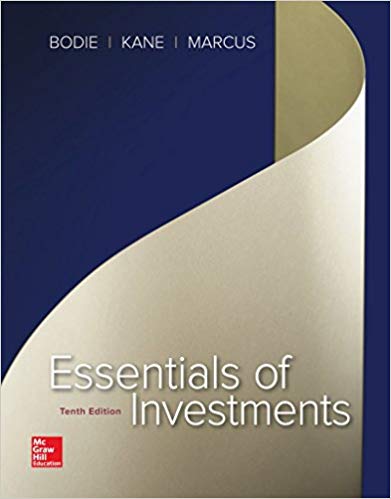Question
Q2: CAPM and APT: 1. The expected rate of return on the market portfolio is 9.75% and the risk-free rate of return is 1.50%. The

Q2: CAPM and APT:
1. The expected rate of return on the market portfolio is 9.75% and the risk-free rate of return is 1.50%. The standard deviation of the market portfolio is 19.75%. What is the representative investor's average degree of risk aversion?
2. Stock A has a beta of 1.50 and a standard deviation of return of 35%. Stock B has a beta of 4.25 and a standard deviation of return of 85%. Assume that you form a portfolio that is 60% invested in Stock A and 40% invested in Stock B. Using the information in question 1, according to CAPM, what is the expected rate of return on your portfolio?
3. Using the information in questions 1 and 2, what is your best estimate of the correlation between stocks A and B?
4. Your forecasting model projects an expected return of 13.25% for Stock A and an expected return of 41.50% for Stock B. Using the information in questions 1 and 2 and your forecasted expected returns, what is your best estimate of the alpha of your portfolio when using CAPM to determine a fair level of expected return?
5. A different analyst uses a two-factor APT model to evaluate expected returns and risk. The risk premiums on the factor 1 and factor 2 portfolios are 4.25% and 2.95%, respectively, while the risk-free rate of return remains at 0.75%. According to this APT analyst, your portfolio formed in question 2 has a beta on factor 1 of 3.70 and a beta on factor 2 of 2.60. According to APT, what is the expected return on your portfolio if no arbitrage opportunities exist?
6. Now assume that your forecasting model of question 4 accurately projects the expected return of Stocks A and B and therefore your portfolio, and that the APT model of question 5 describes the fair rate of return for your portfolio. Do any arbitrage opportunities exist? If yes, would you invest long or short in your portfolio constructed in question 2?

Step by Step Solution
There are 3 Steps involved in it
Step: 1

Get Instant Access to Expert-Tailored Solutions
See step-by-step solutions with expert insights and AI powered tools for academic success
Step: 2

Step: 3

Ace Your Homework with AI
Get the answers you need in no time with our AI-driven, step-by-step assistance
Get Started


